The Farm at Chennai, and why the cheese is so good.
An intro to smear ripened aka washed rind cheeses made in coastal regions.
My recent posts are part of what I am calling the Seeds Series, which sprouted from a piece called The Seed Mother, followed by The Monsanto Analogy and Seeds of Cheese. In these I built a stark binary model of what I see as the problem, and the answer to, the state of modern cheesemaking. This black and white view is useful as a tool, but then again…colors.
Complexity.
Nuance.

This piece will be an intermission, taking a break from the series to describe some of my experiences at a creamery and restaurant in India where I spent 3 weeks doing what I call a “cheesemaker residency”. The team at The Farm Chennai is producing the best cheese I tasted in India, and I will explain why I think it is so good. I will focus on two cheeses, members of a family that are generally referred to as washed rinds, but which I prefer to call smear ripened. This piece also serves as a segue into what comes next in the Seeds Series: a discussion of cheese rind microbes.
Behind a gas station, off a busy road in southern India sits a lovely oasis of palm trees, flowers, and beautifully crafted cheese. I used to think terroir in cheese only happens in remote places where traditions have been practiced over hundreds of years. Where the air is pure, cows roam on bucolic mountainsides, and wood tools are used to make cheese over a fire. My idealism contrasts this with industrial, vaccum sealed blocks from huge herds of Holsteins fed on gmo corn and soy. But ideals are things to be wary of. I’m happy to have found a place that produces wonderful cheese with a terroir of its own, and yet is embedded in a fairly densely populated area.
The Farm- ran by Arul Futnani and Shalini Philip - is far more than a restaurant. The operation also involves a garden, farm store, coffee roasting, baking, and the making sauces, ferments, and jams. I was here focusing on the cheese, offering my knowledge while learning how they make a large range of dairy foods, from yogurt and paneer to bloomy rinds, mozzerella, and aged tommes.
Arul’s father has ran the buffalo and cow dairy on this site for the last 50 years. He has a fairly hands off approach to breeding and mixes various breeds, letting the bulls do their thing without a lot of planning. Definitely no AI. This is a kind of blend of artificial and natural selection that reminds me of the breeding programs of many pastoral groups. It allows the genetics of a herd to be shaped by natural forces and the farming system itself. Over a fairly short amount of time distinct genetic lines have emerged on The Farm that fit in here. The herd is a mix of genetics, and appears very healthy. Genetic diversity is generally a good thing, it turns out. Factor #1 in the delisciouness of the cheese: The animals, and human tending of them, representing one root of terroir.
The buffalos and cows form distinct herds, each living on its own side of an enclosed yard. After morning milking, the cows walk out an open gate and congregate near a quiet backroad. Once they are all together they move across the road into a open grazing area of palm trees, ponds, and wetlands combined with grasslands. The buffalo are then brought out as a single group, requiring a bit more oversight from a group of herders who wear the traditional Lungi, a kind of sarong or kilt like cloth. The cows go one way, to graze unattended on the grassy pastures alongside a series of ponds. The buffalo are watched after, and after grazing a bit longer than the cows (they are more comfortable with the heat), they are brought to a large pond to swim for a bit, which they clearly enjoy. Some of the cows walk in and swim as well, perhaps having learned this behavior from the more amphibious Buffalo.
Once everyone is back home in the early afternoon, the second milking takes place. The animals are then fed on green fodder cut from the lush fields that are fertilized with the run-off from the yard where they spend most their time. These fields sit slightly downhill from the yard, so when it is hosed down, the water runs down a trench and can be directed to various sections, flood irrigation style. In many places the urine and manure of livestock is considered dangerous waste. Here it is utilized as fertilizer for the lush fodder grown as the land serves as filter. Banana leaves and various tall grasses, along with a range of vegetation is hand cut daily, and brought into the yard on a bull drawn cart. Factor #2: This combination of animals feeding on pasture and green fodder grown onsite.
Letting the herds choose freely from a range of plants grown without chemical weapons, while getting exercise, leads to healthy milk and the potential for high quality cheese. A significant factor in the make-up of the milk microbiota is where the animals are sleeping, what surfaces their udders and teats are in contact with while they lay. There is a microbial exchange happening. So the program of cleaning this yard maintains a kind of microbial balance that is linked to the quality of the cheese. The milk goes straight from here to the creamery where it is immediately made into cheese. Factor #3: fresh milk is made into cheese directly, with no intervening refrigeration.
The goodness of this milk really shines in two smear ripened cheeses. Many makers of this style add rind cultures to establish the communities that lead to sticky, stinky orange/red/pink pigmented rinds. This often includes a yeast, and one or more brevibacterium, such as the well known B. Linens. If these salt tolerant bacteria are cultivated with regular brine washing in a conducive enviroment, the smear will begin to form. This rind aids in the ripening of the paste underneath. In a small, soft cheese it can get gooey or runny. In a larger format, a less agressive smear is grown through lower salt in the brine, a less agressive strain, or a more diverse community sharing ground with yeast and/or molds. This will impart just a whisper of the pungent flavors, a hint of death.
At The Farm, they don’t have to add any rind cultures to get the smear to develop. They simple wash with salt.
A natural smear like this often occurs in humid, coastal regions of California. It stands to reason, salt loving bacteria flourishing in salty areas near the sea.
If a continent was a large cheese, the rind would be its coastline. The edge, home to many species, where nutrients, water, and minerals are exchanged. When you wash your coastline in salt water, you are favoring this same type of bacteria that leads to one of the most savory styles of cheese.
Factor #4: a rind community based on collaboration with ambient microbes.
Queso Coromandal is a large format Tomme made from Buffalo milk. It is put into wood crates that stack tightly in a chest freezer turned aging space. This maintains a high humidity, and the rinds turn orange after 10-14 days, the typical timeline for this style. Without washing, geo and mucor begin to cover the orange in a succession expected with this rind ecology. I refer to this as a mixed rind, where you encourage a smear to develop, but then allow a natural rind of molds to grow on top.
The smaller soft Piccolo gets washed every few days, developing a strong aroma and sticky orange rind that is quite prominent. This is the other main approach to smear ripening, to let the smear thrive on a small cheese and preventing mold from growing by regular brine washing. This breaks down the paste inside into a spreadable or sometimes nearly liquid texture. Arul worked out a blend of buffalo and cows milk that got him the right texture, not too liquid. Factor #5: the knowledge and time tested technique of the cheesemakers.
These are just a few of the ideas that ran through my head during my time at The Farm. This list could be far longer, I just ran out of space. The way I think about cheese, the number of variables and comparisons between place I’ve been…..it’s becoming hard to put down on paper. I’ve become overwhelmed by wave after wave of tasty cheese. I’ve got so much milk, I’m gonna need a larger pot.

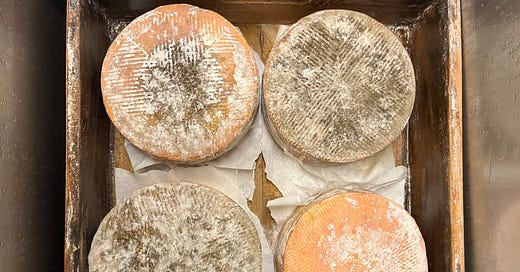


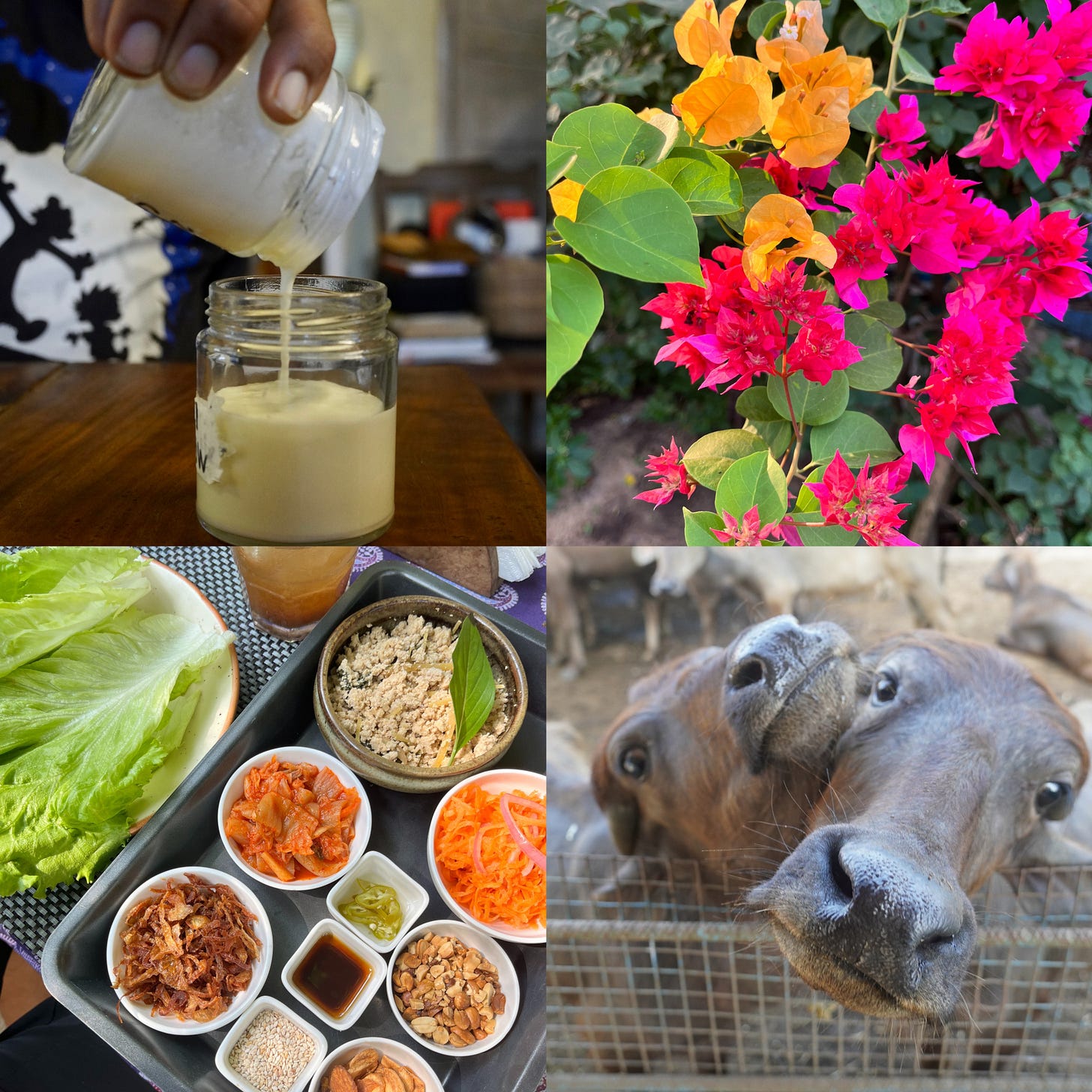


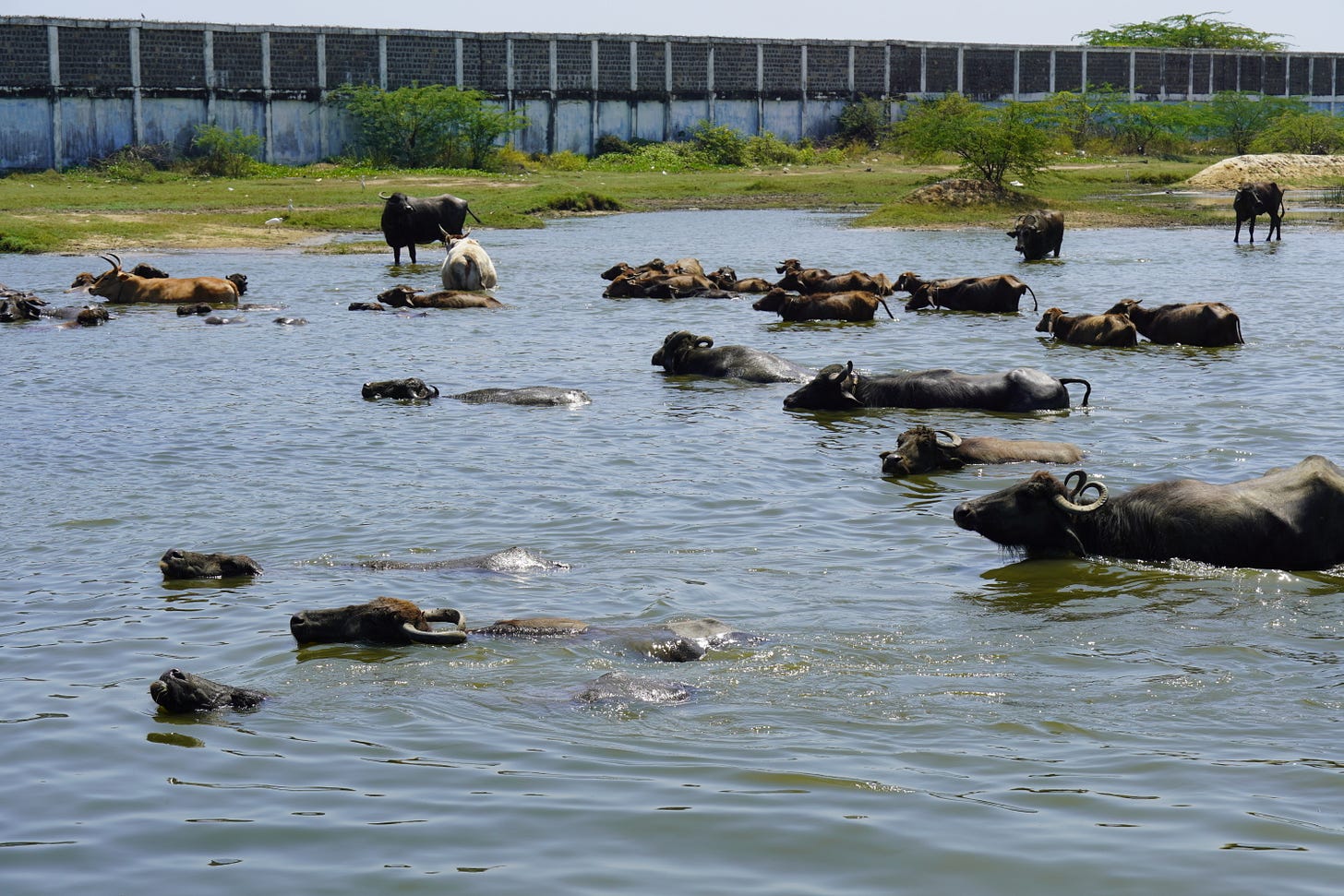
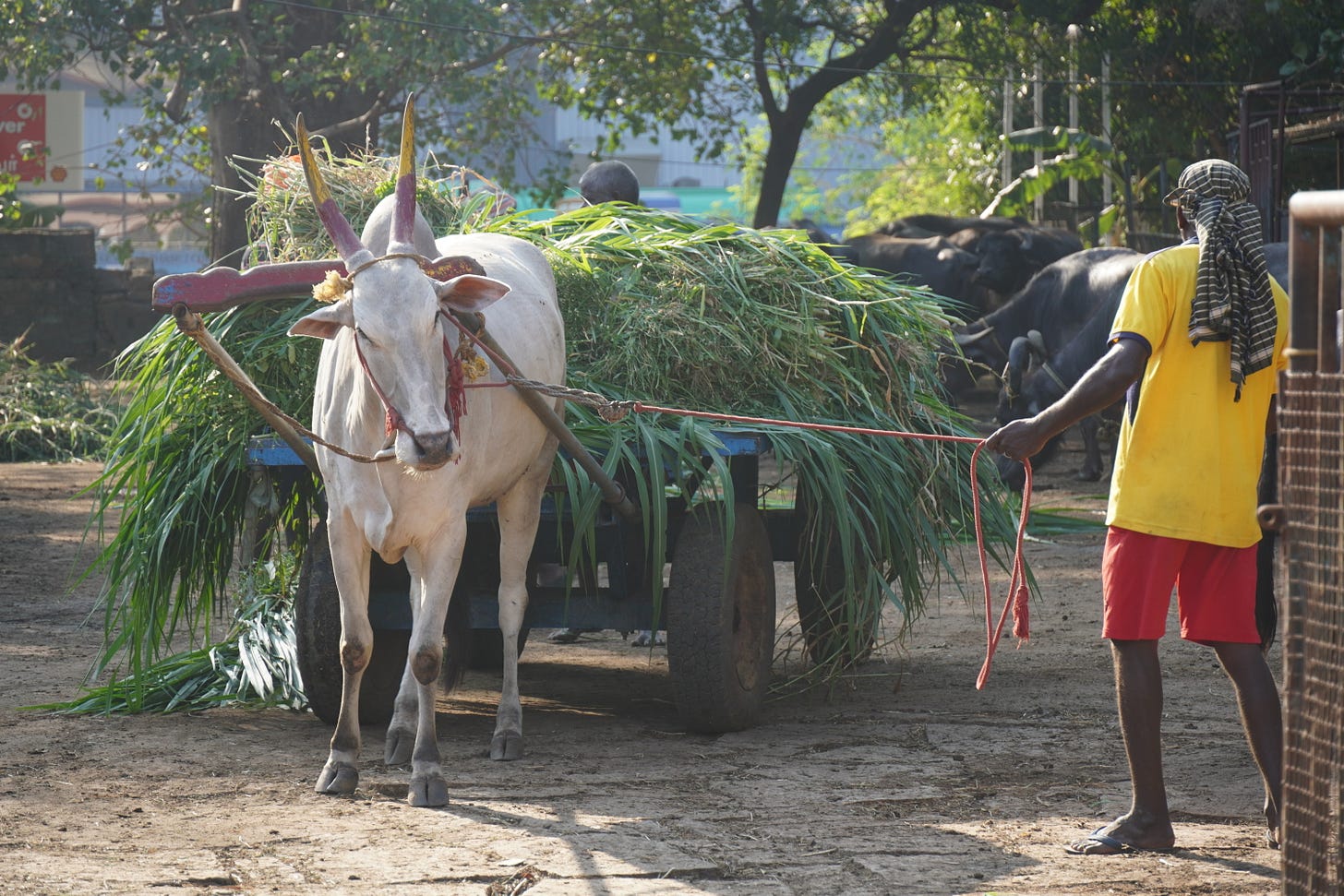
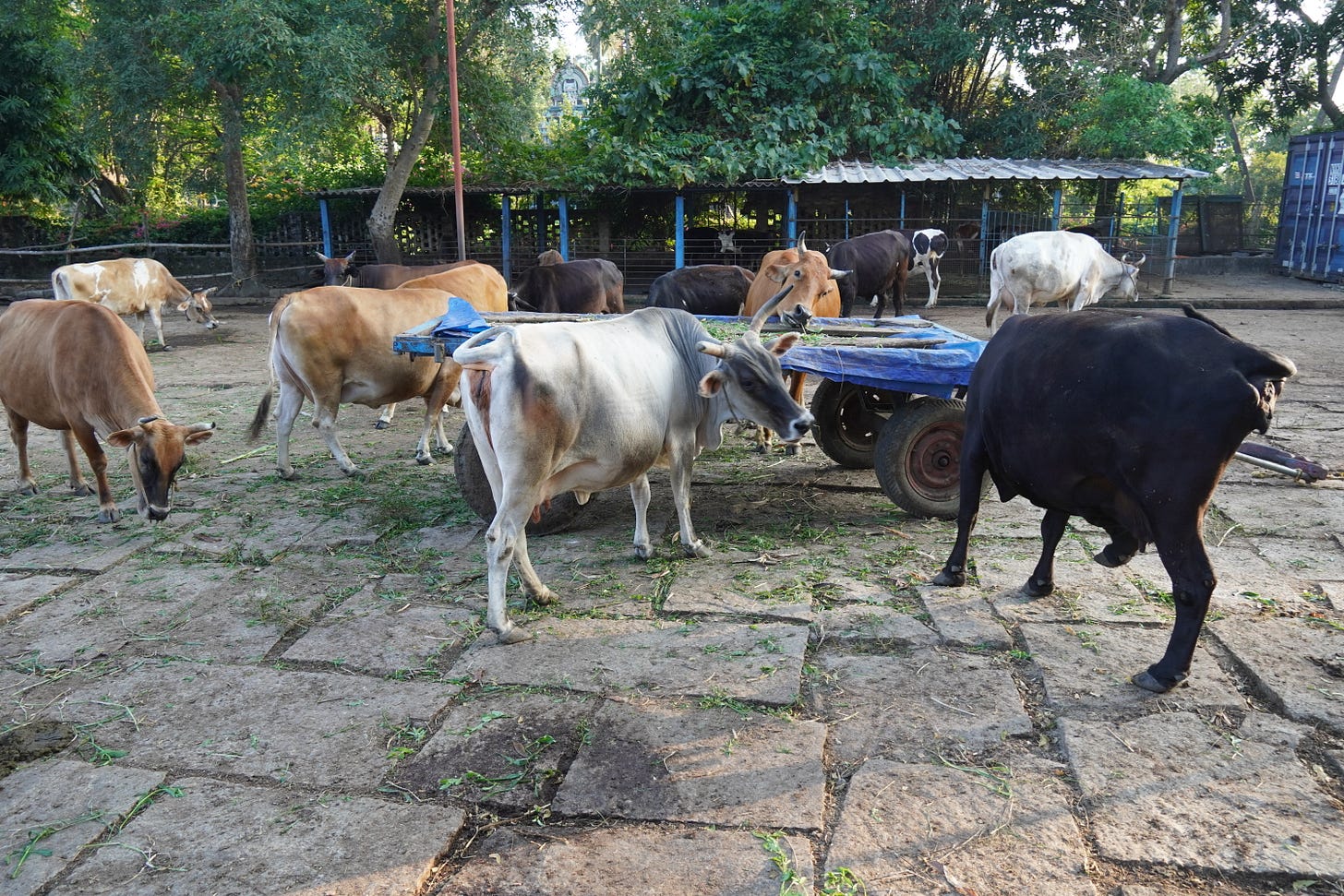
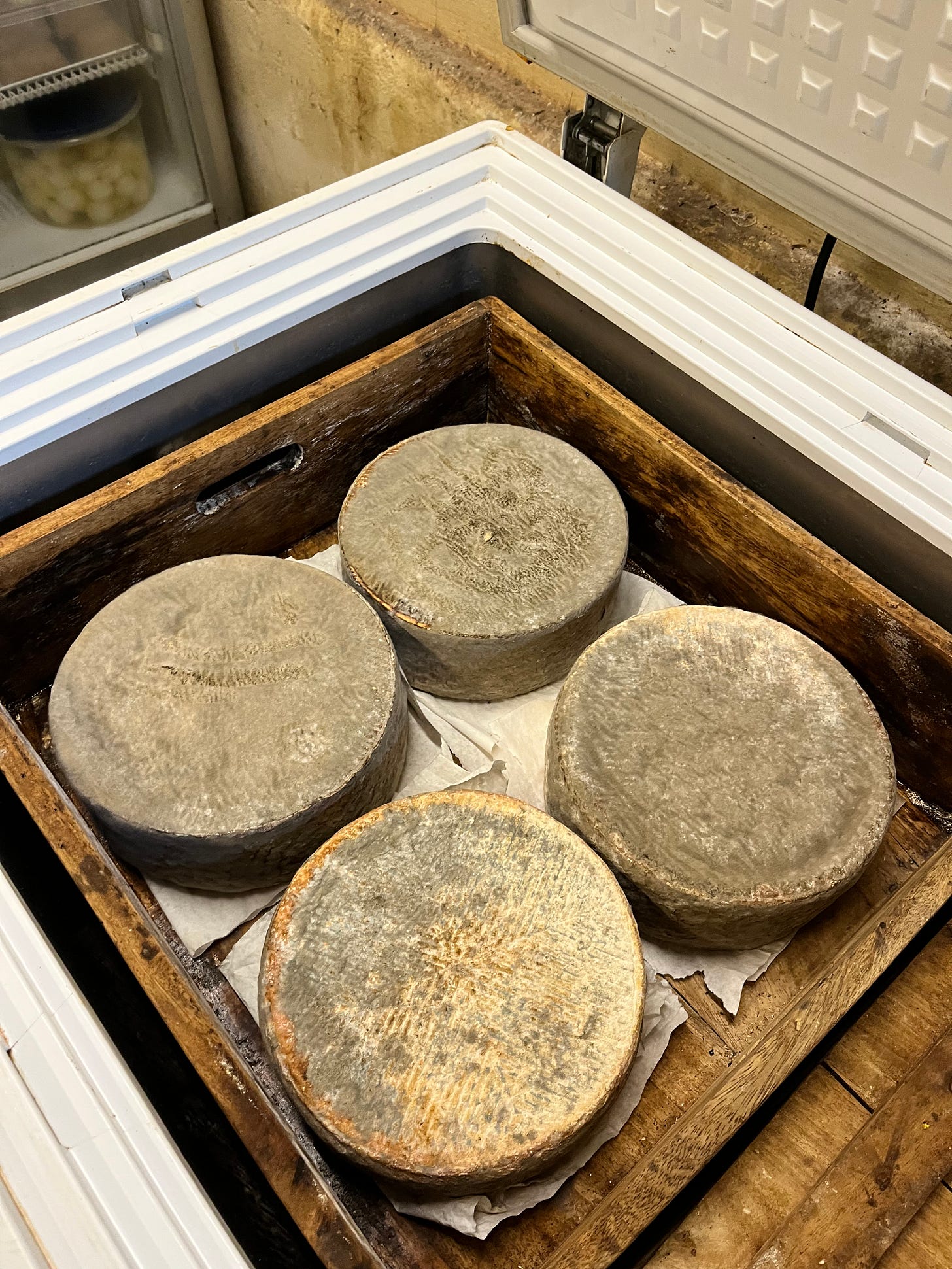
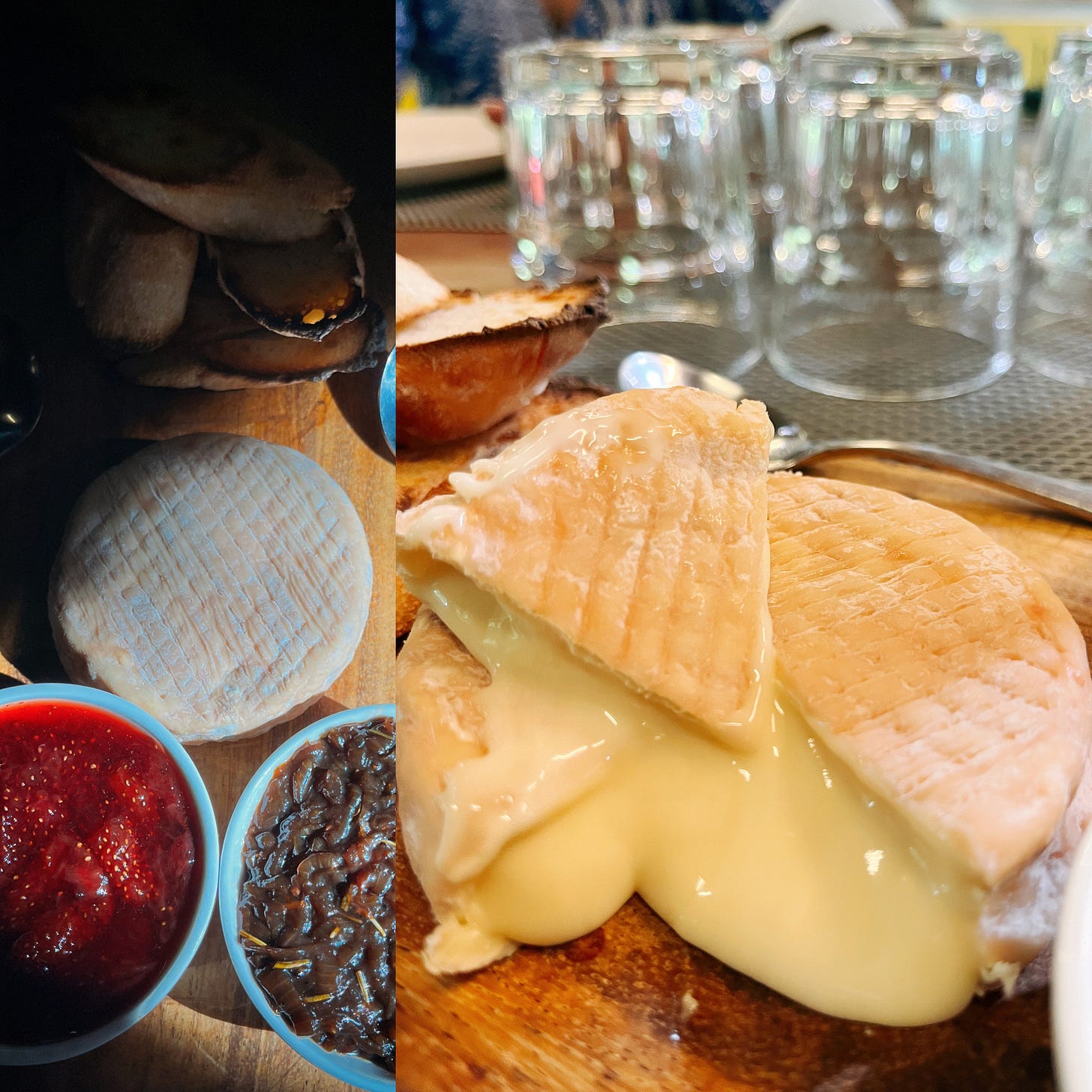
Trevor, thank you so much for all the details you put in this. Microbial families on the udders from where they sleep!. This is something I simply would never have never considered but it’s a “durgh, of course!”, like the microbes on a sourdough bread bakers hands.
Quick question, the chest freezer - was this temperature/humidity regulated in any way or simply closed up at whatever ambient temperature there is there? If so, was it pretty cool mornings there, being not far from the coast?
Cheers and thanks again for the great work you’re doing!, Leon
This was an excellent post, thank you. I love reading about your cheese pilgrimages, although it sometimes leaves me 1, envious, 2, hungry.